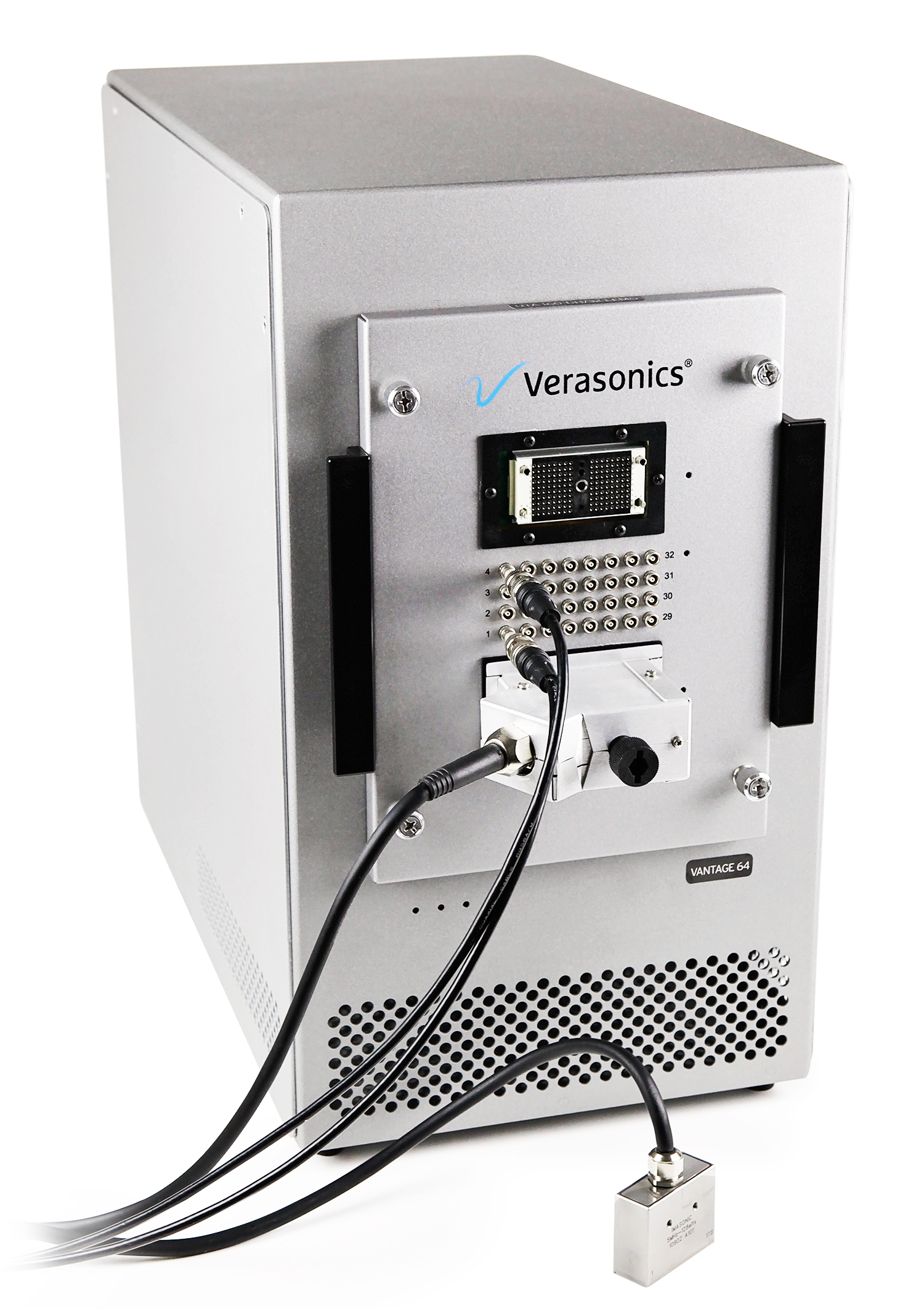Welcome to the fourth issue of PLANE WAVE, Verasonics’ Newsletter through which we share information about new products and technologies, emerging applications, conferences, training opportunities, and collaborations with researchers in ultrasound and ultrasonic technologies. We hope you find these newsletters informative and interesting, and welcome your suggestions for future topics.
New Products and Applications ▪ Technology Information ▪ Research ▪ Conferences and Training
Ultrasound Research in Non-Destructive Evaluation (NDE) drives value with Improved Quality, Standardization and Economics
For more than a hundred years, materials science engineers have faced the problem of assessing the structural integrity of materials and structures without destroying them. Scientists in disciplines as diverse as aerospace, defense systems, energy, infrastructure and transportation, petrochemical and manufacturing have explored ways to determine the physical properties of the materials that society has come to rely on, and they have struggled with very challenging questions:
- Is there a crack or void, or other defect present?
- Is that defect severe enough to compromise the performance or reliability of that structure?
- How can we confidently detect structural defects during manufacturing, or once a product is in use?
This is the field of Non Destructive Evaluation (NDE) and Non Destructive Testing (NDT), in which ultrasound is playing an increasingly important role. In addition to ultrasound, other methods for using NDT/NDE include magnetic particle, liquid penetrant, radiographic, electromagnetic, and visual testing. Today, NDE/NDT is commonly used in material fabrication, manufacturing and construction to control production quality, economics, standardization during manufacturing as well as to ensure product integrity and reliability and most importantly safety once deployed in the field. Engineers evaluate steel and other metals, concrete, composites and many other materials.
Pierre Belanger, Professor at École de technologie supérieure (ETS), Montreal, Canada has used Verasonics ultrasound systems for materials sciences. He recently described for Plane Wave how he uses ultrasound for testing large billets of expensive metals: “For over 4 years, I have used ultrasound as the primary method of non-destructive evaluation in our lab at ETS. Ultrasound is proven as a valuable tool for ensuring quality control and standardization in production processes, while being flexible and cost effective. If a defect is found in NDE, machining can be adjusted or avoided, saving time and money, while, most importantly, ensuring public safety.”
When using ultrasound for NDT/NDE, high frequency sound waves are applied to the material being evaluated. If the sound waves encounter a defect or a material with different acoustic impedance, an abnormality will become visible to the researcher in the wave forms detected by the system. Materials science uses compression waves, shear waves, guided waves and other techniques to locate and characterize materials during industrial inspections.
Professor Belanger added, “Today in industry, ultrasound is routinely used to evaluate materials because of its flexibility in frequency and signal, and because it is possible to achieve a high level of accuracy in the analysis required to perform comprehensive non-destructive testing and evaluation.”
The Vantage ultrasound system provides materials science researchers with phased array technology on an extremely flexible platform for ultrasound innovation across many applications. With proprietary hardware and software technologies that provide researchers access to more channels than any other system available on market, and ability to program each channel independently on both transmit and receive as well as with direct access to raw acoustic data for every channel, the Vantage system enables advanced NDT/NDE algorithm development. Researchers can conceive, implement, and evaluate new approaches to NDT/NDE by using the Vantage system. From integrating a custom transducer array to defining a new data acquisition scheme, or implementing user-defined and real-time data analysis algorithms, researchers can develop new techniques and evaluate them under laboratory or test-floor conditions with unprecedented efficiency.
flexible platform for ultrasound innovation across many applications. With proprietary hardware and software technologies that provide researchers access to more channels than any other system available on market, and ability to program each channel independently on both transmit and receive as well as with direct access to raw acoustic data for every channel, the Vantage system enables advanced NDT/NDE algorithm development. Researchers can conceive, implement, and evaluate new approaches to NDT/NDE by using the Vantage system. From integrating a custom transducer array to defining a new data acquisition scheme, or implementing user-defined and real-time data analysis algorithms, researchers can develop new techniques and evaluate them under laboratory or test-floor conditions with unprecedented efficiency.
“Since 2014, we have used Verasonics ultrasound systems with our research studies. We have found Verasonics to be very flexible for developing new techniques and methods for materials testing,” said Professor Belanger.
The Vantage™ ultrasound systems support many transducer types with dual hypertronics connectors for phased array transducers plus 32 LEMO transducer connectors for single element transducers.
Vantage can advance NDT/NDE research by providing:
- Open architecture for unparalleled flexibility
- Programmable transmit sequences and focal laws
- Arbitrary waveform capability on each channel
- Extended transmit (coded excitation) capabilities
- Frequency ranges from 50 kHz To 50 MHz
- 6.6 GB/s data transfer rate
- 64, 128, 256 channel models available
- TFM and FMC capabilities
- Support for many transducer types, from 1 element to 256, and more
- MATLAB user interface with easy integration of real-time custom processing
“The future of NDT/NDE is bright. I believe, we will advance the use of this valuable technique for quality control in detecting defects to save time and money in production accuracies ,” said Professor Belanger. “We have begun assuring material properties beyond simple assessment of defects, which could aid further in better product quality and reliability as materials, parts and assemblies are produced.” Ultrasound has a large role in moving NDT/NDE into the future with these new capabilities.”
Visit Us and Learn What’s New at these Upcoming Conferences:
Currently there are no upcoming conferences, however, please join us for our next Vantage customer training via live webinar, 1-4 February, 2021, 9 – 11 am PT.
Please contact [email protected] to register or click here for more information.

